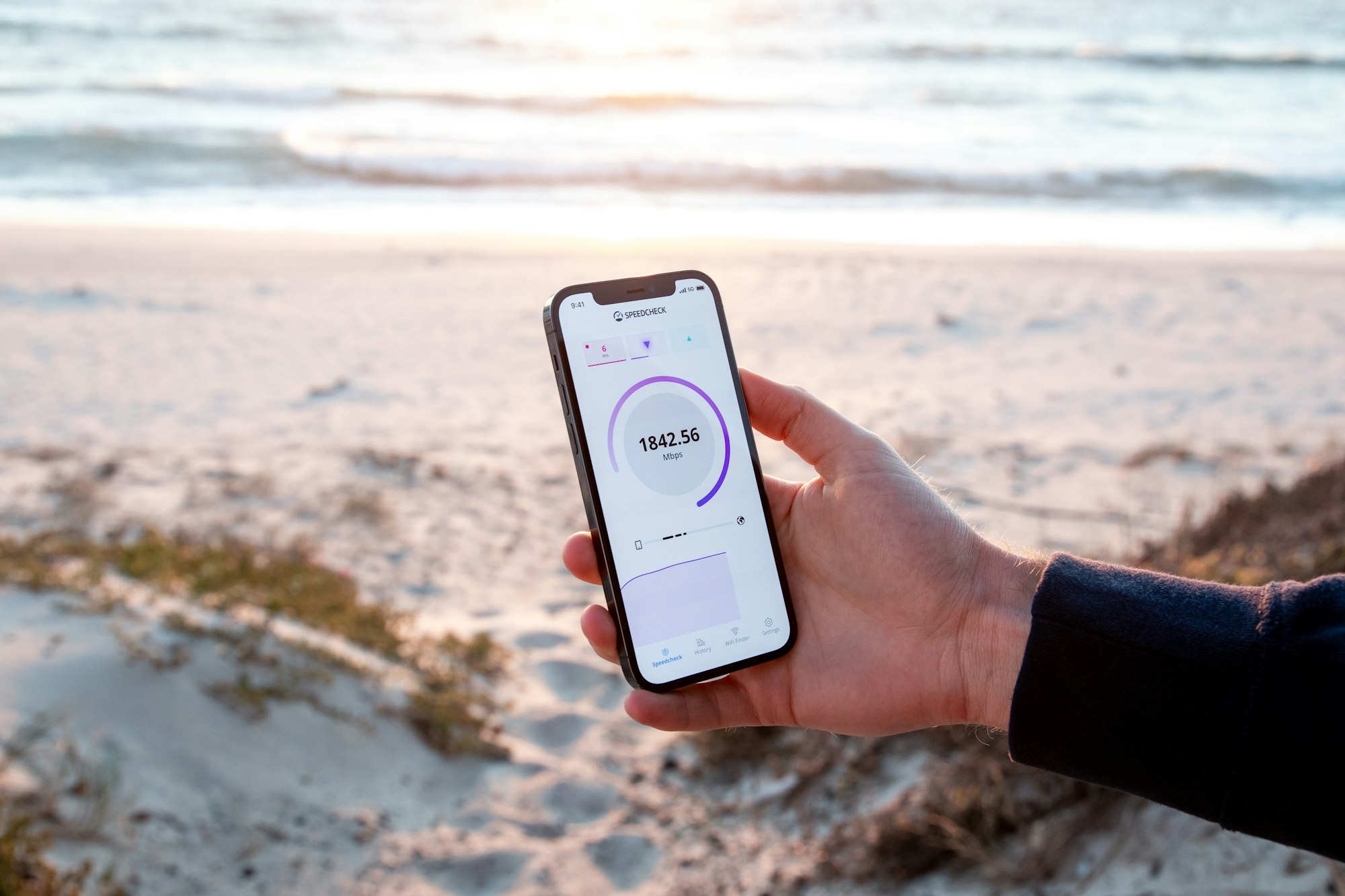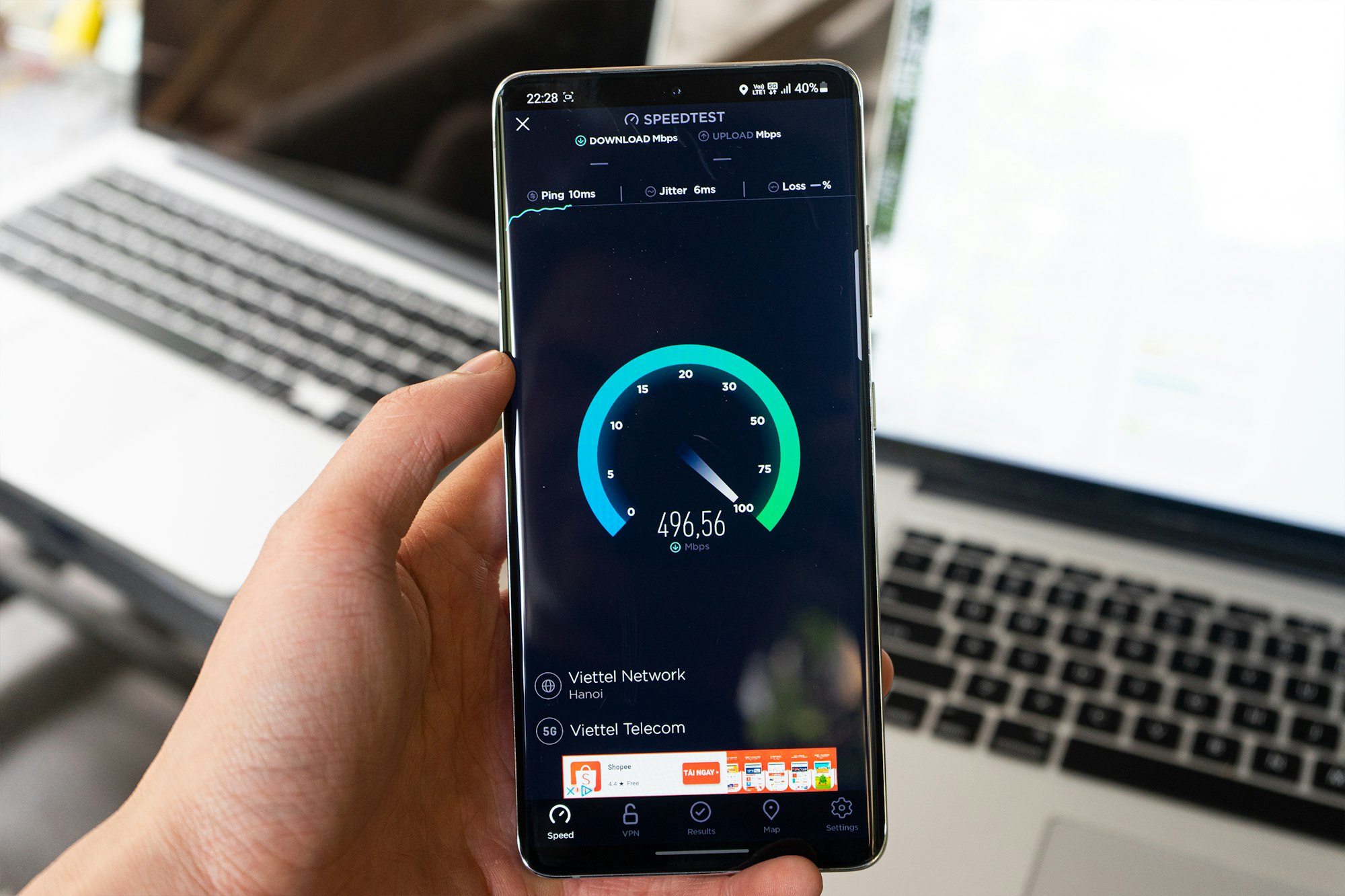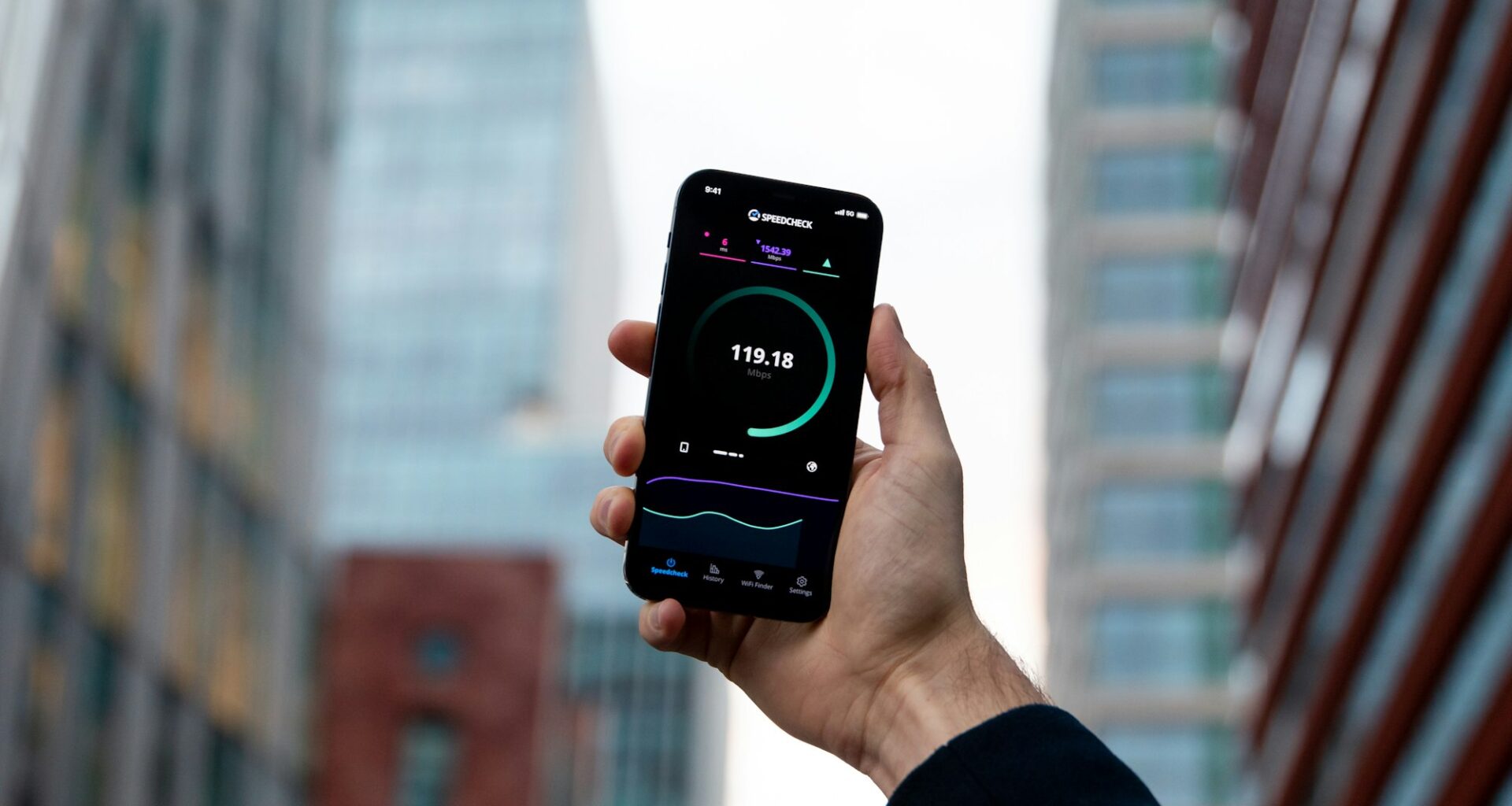The world has barely adapted to the revolution of 5G technology, yet conversations about its successor are heating up, and the next frontier of telecommunications already has a name: 6G.
6G is the name for the sixth generation of cellular networks expected to bring new possibilities across telecom, technology sectors, wider industry, and society.
Although it’s still largely in a conceptual phase and years away from being commercially available, 6G promises to redefine the limits of wireless technology, bringing unimaginable speeds, ultra-low latency, and an ability to blend our physical and digital realities in ways that sound like science fiction.
But first, let’s address the elephant in the room. Should we even be talking about 6G yet, when 5G hasn’t delivered on half of what it promised?
5G—Overpromised but underdelivered
When 5G launched in 2019, it was marketed as the future of mobile internet, a technological revolution. For starters, it promised a much faster speed of up to 20 Gb achieved by using smaller, higher-frequency radio waves called millimeter waves. This represented a theoretical speed increase of 200 times over the 150 Mbps cap of 4G.
We were told these faster speeds and low latency would enable remote robotic surgeries, self-driving, smart cities that basically ran themselves, and cloud gaming with zero lag. Futuristic use cases filled the ads, the keynote slides, and the headlines.
And yet, depending on where you live, you’ve probably had 5G in your pocket for years now. Has your internet speed changed significantly from 4G because of it? I live in Africa, and for most people like me, the answer is no. The bold promises have given way to incremental upgrades, noticeable, yes, but far from revolutionary.
But Africa’s 5G adoption is a unique case, so let us take the U.S., the world’s biggest economy, as an example. According to Ookla’s speed test data, median download speeds in many states sit around 150 Mbps, basically 4G speeds with better marketing. Even in the best markets, most consumers don’t see more than 200 Mbps. That’s useful for browsing, streaming, and video calls, but nowhere close to the gigabit speeds we were told would be the norm. Latency averages around 28 ms nationwide, which is fine for casual use but still too high for applications such as AR, VR, or real-time robotics.
Globally, the situation isn’t much different. Some European and Middle Eastern countries observe some of the highest speeds at 100–500 Mbps on 5G, but the range is so wide that averages are not very meaningful. The fastest countries, like the United Arab Emirates and Qatar, reach over 500 Mbps—impressive but still exceptions rather than the norm. Meanwhile, in Africa and Latin America, speeds are much lower, ranging from 15 to 50 Mbps, barely scratching the surface of what was promised.
A big reason 5G has underdelivered, as stated in a report by Orange Labs, is that most networks are still running Non-Standalone (NSA) 5G, which leans on 4G infrastructure instead of being built from scratch. The full potential of Standalone (SA) 5G, the version capable of ultra-low latency, advanced network slicing, and futuristic industrial applications, remains largely untapped. A recent report from the GSA, out of over 350 public 5G networks worldwide, only 73 in 39 countries (about 21%) have gone fully Standalone.
Europe lags even further, with just 2% of networks Standalone, compared to 24% in the U.S., per Ookla’s “Global Evaluation of Europe’s Competitiveness in 5G SA” report. Without that transition, the much-hyped 5G features can’t really exist outside of controlled trials and marketing slides. Overall, a slow transition to Standalone 5G has kept many of the biggest benefits off the table.
To be fair, there are niches where 5G is quietly delivering. Private 5G networks in airports, ports, factories, and warehouses are already powering logistics, robotics, and automation. Most of these setups are Standalone, showing what’s possible when the technology is fully deployed. But these examples remain specialized and expensive, far from the reality of the average consumer.
So here we are, six years into the 5G era. The upgrade is real, but not transformative. Which makes the global rush toward 6G feel a bit premature. But maybe that’s exactly what needs to happen if we want to push beyond today’s 5G limitations.
WHAT IS: 5G Network Rollout
Global 5G connections have surged to 2.25 billion, growing four times faster than 4G LTE did at a comparable stage.

With 5G turning out to be more incremental than revolutionary, 6G is being framed as the technology that will finally bridge that gap between promise and delivery. Where 5G leaned heavily on 4G-era infrastructure and hasn’t fully lived up to its potential, 6G is meant to meet the demands of the coming decade, enabling a new set of use cases that 5G couldn’t fully support.
According to a report by Nokia, the ambition goes well beyond just giving us faster internet on our phones, which will still remain a key device in the 6G era. Instead, 6G imagines networks that are intelligent, adaptive, and deeply intertwined with other emerging technologies such as artificial intelligence, quantum computing, and even space-based communication. If 5G tried to connect everything, 6G is meant to make those connections smarter, more secure, and seamless across both the physical and digital worlds.
What does 6G promise?
In practice, that vision translates into a set of ambitious and sometimes outrageous goals. 6G is expected to deliver speeds that surpass even the best of 5G, reaching into the realm of terabits per second, where downloads could happen almost instantly. Latency, often the weak link in today’s networks, would drop to microseconds, making digital interactions feel truly real-time. Such responsiveness could enable things like remote-controlled robots that operate as if they were right in front of you, ultra-immersive gaming and VR experiences, or even holographic communication that feels like a face-to-face conversation.
The promises don’t even stop there. 6G also aims to blend physical and digital realities more deeply than anything before it. Technologies like augmented and virtual reality could finally reach their full potential through “digital twins,” virtual replicas of machines, buildings, or even entire cities that update in real time. The Internet of Things, which today feels fragmented and limited, could scale to billions of devices working in sync without straining the network. At the same time, artificial intelligence would no longer just sit on top of the network but be woven directly into it, making 6G adaptive, self-optimizing, and capable of anticipating user needs before we even ask. And because quantum computing is on the horizon, 6G is also being designed with security in mind, incorporating quantum-resistant encryption to stay ahead of future cyber threats.
If 5G gave us a glimpse of “smart cities,” what 6G is promising is an “intelligent world,” one where the network itself functions almost like a living system, shaping how we live, work, and interact in ways that go far beyond today’s imagination.
WHAT IS: Cellular Network Generations (1G, 2G, 3G, 4G, 5G)
Mobile networks have evolved from basic analog voice calls in the 1980s (1G) to today’s ultra-fast, real-time 5G systems.
 Why do we need 6G?
Why do we need 6G?
Of course, a fair question is whether we actually need 6G at all, especially when 5G still feels like overkill in many places. From a consumer perspective, faster streaming or smoother gaming hardly seems like the kind of leap worth billions in investment. But the case for 6G becomes clearer when you zoom out to the larger ecosystem. The rise of artificial intelligence, autonomous vehicles, industrial robotics, and advanced sensing technologies is already pushing current networks to their limits. Add in the growing ambitions around space-based communications, smart infrastructure, and even brain-computer interfaces, and suddenly the capacity of today’s networks begins to look far too small.
The truth is that data traffic is exploding, the number of connected devices is multiplying, and applications are demanding levels of precision and security that 5G simply wasn’t built to deliver at scale. That’s why 6G is being positioned not as just another communications standard but as a multi-purpose platform, one that integrates computing, sensing, and intelligence directly into the way we connect. For all the skepticism around whether it will truly deliver, there’s a strong case that 6G isn’t just about chasing faster speeds—it’s about building the infrastructure that the next generation of digital life will require.
When will 6G arrive?
The straightforward answer is: not any time soon, not tomorrow, not next year. If history is any indication, mobile generations tend to emerge roughly every ten years. 2G launched in 1991 in Finland, 3G appeared in the early 2000s in Japan, 4G around 2010 in Norway and Sweden, and 5G started rolling out in 2019. Based on this pattern, we’re six years into a 10-year journey, and we can estimate that 6G won’t arrive until around 2030.
And let’s be clear: when we say “arrive,” we don’t mean blanket coverage and instant access. What we’ll see first are early trials by 2028 or so. Subsequently, companies will engage in large-scale deployments in tech-heavy cities, university campuses, or defense projects. Only then, moving into the 2030s, will broader rollouts begin to enter public life. Overall, this decade will focus on testing, refining, and establishing global standards, which are expected to develop through organizations like the ITU and 3GPP. In essence, the foundational work of 6G is already underway.
A report by Ericsson confirms this estimation, noting that 6G is expected to be ready for commercial markets by the early 2030s
However, at present, the technology remains in the research phase, with initial experiments concentrating on extremely high-frequency spectrum, advanced antenna designs, and AI-driven network management.
WHAT IS: Use Cases of 5G
From smart cities to autonomous cars, 5G is turning futuristic ideas into real-world solutions.

Even at this early stage, the global race to 6G is well underway, reflecting the same geopolitical rivalries that we saw in the 5G era.
But judging by the advancements already made by different countries globally, China appears to be dominating the 6G conversation, investing heavily in national research programs and collaborating with companies like Huawei and ZTE to secure leadership.
Meanwhile, the U.S. is also cautious about losing ground in 5G and is also making significant investments through partnerships between technology giants such as Qualcomm, Intel, and AT&T, along with government-supported initiatives.
Europe is also positioning itself aggressively, with the EU launching its “Hexa-X” program to develop 6G standards in collaboration with Nokia, Ericsson, and other regional players. South Korea and Japan, already leaders in advanced telecom deployment, are advancing as well, with Samsung and NTT Docomo among the most active in early trials. Meanwhile, research laboratories in Canada, Finland, and even India are entering the race, showing that 6G is not just a competition between superpowers but a worldwide effort to shape the future of connectivity.
At the end of the day, this race is about more than just the technology; it is about the influence that it will bring. The country that is able to develop the infrastructure for 6G first will have significant leverage over the digital economy of the future, just as 5G has become a battleground for political and economic power.
Japan has set a world record for internet speed
The secret behind this milestone came in the form of a newly developed cable thinner than a mechanical pencil.

So where does that leave us? On one hand, it’s easy to roll your eyes at the hype across the internet. After all, 5G was marketed as a revolution but ended up feeling like an incremental version of what we already had, with many of its transformative features confined to limited, specialized deployments. And there’s a strong possibility that 6G could follow the same path, with big promises on paper and only minor changes in everyday life.
On the other hand, dismissing 6G entirely might be short-sighted. The pressures on global networks are real, and the applications driving them are only becoming more demanding. With emerging technologies like autonomous systems, immersive realities, and AI-driven decision-making moving at a fast pace, the networks supporting them, too, will have to evolve. In that regard, 6G is less about chasing buzzwords and more about future-proofing society’s digital infrastructure.
At the end of the day, the truth probably lies somewhere in the middle. If 5G showed us anything, 6G won’t transform the world overnight, but it will establish the groundwork for technologies we haven’t developed yet. Now, whether it becomes the revolution 5G was meant to be depends on how governments, companies, and societies decide to use it.
And perhaps that’s the point: 6G is not just a race for faster speeds but a test of what we truly want our connected future to look like.
